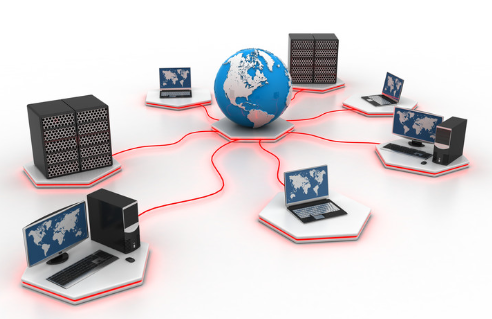Introduction to Computer Networks: Connecting the Digital World
Introduction
Computer networks are the backbone of our interconnected world, enabling seamless communication and data exchange between devices and systems. From local area networks (LANs) in homes and offices to global-scale wide area networks (WANs), understanding the fundamentals of computer networks is essential in today’s digital age. In this blog post, we will provide a comprehensive introduction to computer networks, exploring their definition, types, components, and the benefits they bring to individuals and businesses alike.

- What is a Computer Network?
A computer network refers to a collection of interconnected devices, such as computers, servers, routers, switches, and wireless access points, that communicate with each other to share resources and information. Networks can be classified based on their geographical coverage, such as LANs, WANs, and metropolitan area networks (MANs). They can also be categorized based on their functionality, such as client-server networks, peer-to-peer networks, and hybrid networks. Computer networks enable efficient data transmission, resource sharing, and collaboration, forming the foundation of modern communication and information exchange. - Types of Computer Networks
Computer networks come in various forms, each serving specific purposes. Local Area Networks (LANs) are commonly used in homes, offices, and small-scale environments, connecting devices within a limited geographical area. Wide Area Networks (WANs) cover larger areas, often spanning across cities or even continents, and are utilized by organizations to connect multiple locations. Metropolitan Area Networks (MANs) bridge the gap between LANs and WANs, providing connectivity within a metropolitan region. Additionally, there are specialized networks like Storage Area Networks (SANs) and Wireless Local Area Networks (WLANs) designed for specific applications and environments. - Components of a Computer Network
Computer networks comprise several key components that work together to facilitate communication and data transfer. These components include:
a) Nodes: Nodes represent devices connected to the network, such as computers, servers, printers, and routers. Each node has a unique address, known as an IP address, to identify and communicate with other devices.
b) Network Media: Network media refers to the physical or wireless medium used to transmit data between nodes. Examples include Ethernet cables, fiber optics, and wireless signals.
c) Network Devices: Network devices, such as routers, switches, and wireless access points, manage the flow of data within the network, directing it to the intended destination.
d) Protocols: Protocols are a set of rules and standards that govern data transmission and communication within the network. Common protocols include TCP/IP (Transmission Control Protocol/Internet Protocol) and Ethernet.
e) Network Services: Network services provide additional functionality to the network, such as file sharing, email services, and web hosting.
- Benefits and Applications of Computer Networks
Computer networks offer numerous benefits and find applications in various domains:
a) Resource Sharing: Networks enable the sharing of hardware resources, such as printers and storage devices, as well as software applications, fostering cost efficiency and collaboration.
b) Communication and Collaboration: Networks facilitate seamless communication through email, instant messaging, and video conferencing, enhancing productivity and enabling remote collaboration.
c) Data Sharing and Transfer: Networks enable the efficient sharing and transfer of data, enabling organizations to access and collaborate on information from different locations.
d) Internet Connectivity: Networks provide access to the internet, connecting individuals and businesses to a vast array of online resources, services, and information.
e) Centralized Management: Networks allow centralized management and administration of devices, security policies, and software updates, simplifying maintenance and enhancing security.
Conclusion
Computer networks serve as the underlying infrastructure that connects our digital world. Understanding the basics of computer networks is essential for individuals and businesses alike. In this blog post, we discussed the definition of computer networks, explored different types of networks, and examined the key components that make up a network. We also highlighted the benefits and applications of computer networks, emphasizing their role in resource sharing, communication, data transfer, and centralized management. As technology continues to advance, the importance of computer networks will only grow, shaping our interconnected future.
